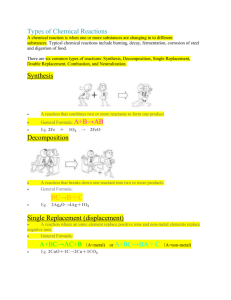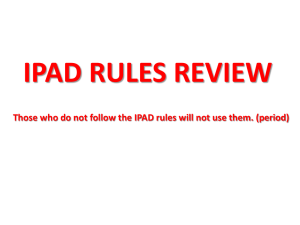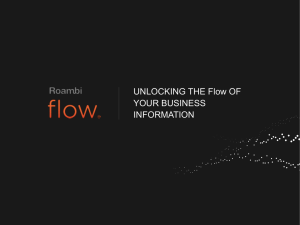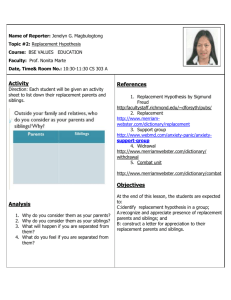DISTRICT ENTRY PLAN - Littleton Public Schools
advertisement
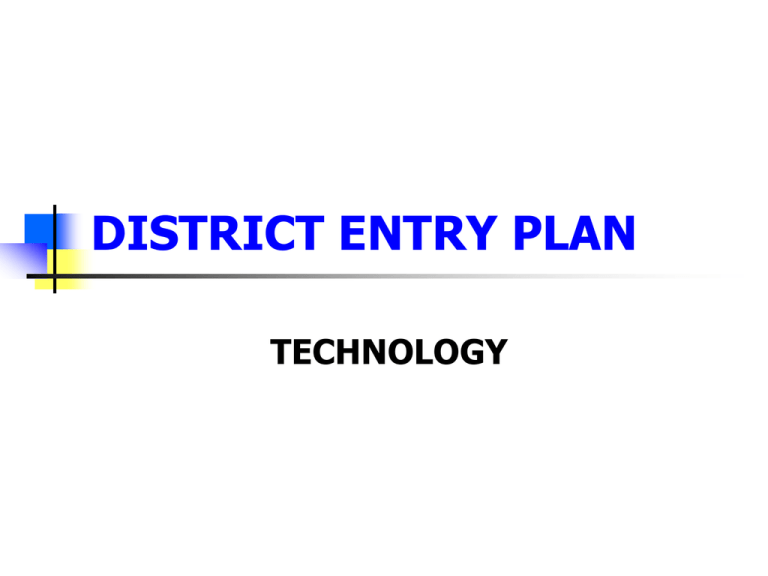
DISTRICT ENTRY PLAN TECHNOLOGY OBSERVATIONS Currently have 3.5 technology staff within the district. Distribution of Technology equipment in the district currently utilizes a replacement plan which typically moves older technology to the k-5 schools. Current district technology replacement plan would take approximately 23 years to be actualized. OBSERVATIONS (cont.) We have been fortunate to upgrade technology outside of the district replacement plan through the utilization of grants, donations and the recent school renovation project at Russell Street School. Ex: Smart Board acquisition at RSS, Laptops for HS STEM initiative iPad implementation: MS social studies, MS, HS SPED, SL Kindergarten, HS various departments and a HS IMAC media lab. OBSERVATIONS (cont.) We have approximately 601 computing devices in our schools. 66% of these devices are more than 5 years old. Wireless 4 to 1 systems exist at RSS and LMS. High School, Shaker Lane student and staff access somewhat limited as a result of current infrastructure. Technology support is managed through an online ticket request center. OBSERVATIONS (cont.) Technology staff spend significant time trouble shooting and fixing hardware and infrastructure problems as a result of current infrastructure. Minimal time is spent supporting technology integration within the classroom. We have managed to increase available time for integration support throughout the year through the offering of PD activities and the reorganization of our technology department. Dedicated servers for data storage are evident within various locations of the district but a consistent protocol is not used. Methods of data retrieval and storage are inconsistent throughout the district. OBSERVATIONS (cont.) Data backup protocols within the district are not well established as a result of limited revenues required for a systemic solution. Cloud technology has alleviated some of the concern. The current Student Information System ( Rediker) is not web based and poses many challenges in regard to data organization as well as the ability to import and export data from other software programs that are used within the district. Parent portal access, report card format, student assessment software have been limited as a result of the functionality of the current SIS system. OBSERVATIONS (cont.) Student assessment software is not standardized within the district which creates challenges in regard to electronic data storage tailored to track multi- year student assessment data. Our district currently has a five year technology plan. Decisions in regard to technology acquisition specific to the current replacement plan at the school level were centralized with limited input from school based administration and staff. We have formed school based technology teams that have representation on the district technology committee. OBSERVATIONS (cont.) District email service does not have the capacity to handle the increased use of hand held devices within the district. Converted to gmail which has been very successful. District web page was not designed using a multi- user format thus creating challenges to keep up to date information on our websites. A new website has been developed using software that allows for multiple access points. OBSERVATIONS (concl.) OUR STAFF ARE EAGER TO IMPLEMENT TECHNOLOGY INTO THEIR CLASSROOMS AND SEE THE DIRECT LINK TO STUDENT LEARNING. CONSIDERATIONS Continue to assess current technology support structure with an awareness that we need to continue to explore off-site services to create efficiencies within the department with a focus on creating expectations for staff that are tailored to maximize current talents and enhance integration support to teachers. Develop a technology district plan that is aligned with the Massachusetts Technology Standards. This approach will allow us to determine the technology needs at each school and will lead to the development of a master plan that ensures that our students graduate with technology skill sets that are aligned with post secondary expectations. CONSIDERATIONS (cont.) Incorporate grade level technology standards into the various curricula and formalize student learner objectives within the curriculum mapping process. Continue to implement iPad technology within our school district and evaluate the effectiveness as it pertains to student learning. Consider using a lease purchase approach to purchasing iPad technology within the district, recommend that we consider the purchase of 120 iPads for the school district for the FY 13 year. (Approximate cost $ 30,600 per year for three years) CONSIDERATIONS (cont.) Consider moving technology replacement funding from the capital budget to our operational budget which would allow us to commit to a well defined long term acquisition plan. Continue to explore, purchase and access online curricula resources that allow us to move to a resource based curriculum format. Continue to provide training and support for our staff as they implement various technologies within their respective classrooms. CONSIDERATIONS (cont.) Evaluate the limitations of our current SIS system and determine what we need to support data collection and document creation within our district to determine what our needs will be for the next five years. Determine what we need to provide online student assessment access to parents and students. Formalize a student assessment software program that is standardized throughout the district. Continue to explore the possibility of implementing a BYOD approach to technology at LMS and LHS. CONSIDERATIONS (cont.) Consider allocating the necessary funds to install wireless networks at LHS and SL schools. Continue to explore the expansion of online course offerings at LMS and LHS. Explore the curricula offerings of various vendors to determine the best fit for online course offering within our district. Continue to utilize Webinars as a way of increasing opportunities to provide cost effective professional development to our staffs. CONSIDERATIONS (concl.) Encourage our school based and district technology teams to keep abreast of the latest technology and help determine district direction for the next five years. Continue to model leadership in the area of technology at the District Level.



